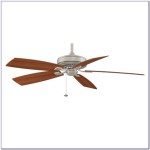Ceiling Fan Oil: What You Need to Know
Ceiling fans are a common fixture in many homes, providing welcome relief from the heat during the summer months. But like any mechanical device, ceiling fans require regular maintenance to keep them running smoothly and efficiently. One important aspect of ceiling fan maintenance is lubrication. Ceiling fans use a variety of moving parts, including bearings, bushings, and motors, all of which can benefit from lubrication with oil.
Why Ceiling Fans Need Oil
Ceiling fan oil is a specialized lubricant designed specifically for use in ceiling fans. It is formulated to be thin enough to penetrate tight spaces and thick enough to provide long-lasting lubrication. Ceiling fans typically use ball bearings, which are small steel balls that rotate within a housing, allowing the fan blades to move smoothly. Over time, these bearings can become dry and worn, causing friction and noise. Ceiling fan oil helps to reduce friction, preventing wear and tear on the bearings and keeping the fan running smoothly and quietly.
In addition to bearings, many ceiling fans also use bushings, which are cylindrical sleeves that help to reduce friction between moving parts. Bushings can also become dry and worn over time, leading to noise and reduced efficiency. Ceiling fan oil can help to lubricate these bushings, extending their lifespan and ensuring smooth operation.
Finally, the motor in a ceiling fan is a critical component that can also benefit from lubrication. The motor uses brushes to create an electrical connection, which can generate heat over time. Ceiling fan oil can help to reduce friction and heat buildup in the motor, extending its lifespan and preventing premature failure.
Types of Ceiling Fan Oil
There are several types of ceiling fan oil available on the market, each with its own unique properties and benefits. Some common types include:
- Silicone-based oil: This type of oil is often preferred for ceiling fan lubrication because it is heat-resistant, waterproof, and does not attract dust or dirt. It also has a long shelf life and does not evaporate easily.
- Petroleum-based oil: This type of oil is less common for ceiling fan lubrication because it can attract dust and dirt, making it less effective over time. It is also less heat-resistant than silicone-based oil.
- Synthetic oil: This type of oil is a blend of synthetic and petroleum components, offering a balance of performance and price. It is often a good choice for general-purpose lubrication but may not be as effective as silicone-based oil for ceiling fans.
When choosing a ceiling fan oil, it is important to select one that is specifically designed for use in ceiling fans. Avoid using general-purpose household oils, as these may not be compatible with the materials used in ceiling fans and could potentially damage the fan.
How to Oil a Ceiling Fan
Oiling a ceiling fan is a relatively simple process that can be done by most homeowners. To get started, you will need the following supplies:
- Ceiling fan oil
- A small brush, like a paintbrush or a toothbrush
- A soft cloth
- A ladder
- Safety goggles
Once you have gathered your supplies, follow these steps:
- Turn off the power to the ceiling fan at the breaker box.
- Use the ladder to reach the fan, ensuring it is stable and secure. Never stand on a chair, box, or any other unstable support.
- Carefully remove the fan blades by unscrewing the screws that hold them in place. Be sure to note the order of the blades so you can reinstall them correctly.
- Use the brush to apply a small amount of oil to the bearings and bushings on the fan's motor housing. Avoid applying too much oil: just a few drops should be sufficient.
- Wipe away any excess oil with the cloth.
- Reinstall the fan blades, making sure to tighten the screws securely.
- Turn the power back on to the ceiling fan. Let the fan run for a few minutes to ensure that the oil has been distributed evenly.
It is recommended to oil your ceiling fan at least once a year, or more frequently if you live in a dusty or humid environment. By regularly oiling your ceiling fan, you can help to keep it running smoothly and quietly for many years to come.

How To Oil A Ceiling Fan With Pictures Wikihow

How To Oil A Ceiling Fan Step By Guide

How To Oil A Ceiling Fan With Pictures Wikihow

How To Oil A Ceiling Fan With Pictures Wikihow

How To Oil A Ceiling Fan

How To Oil The Hunter Original Ceiling Fan

How To Oil A Ceiling Fan With Pictures Wikihow

How To Oil A Hunter Ceiling Fan In 5 Easy Steps

How To Lubricate Ceiling Fan Wd40

Ceiling Fan Maintenance Tips For Homeowners Pro Electrician
Related Posts








